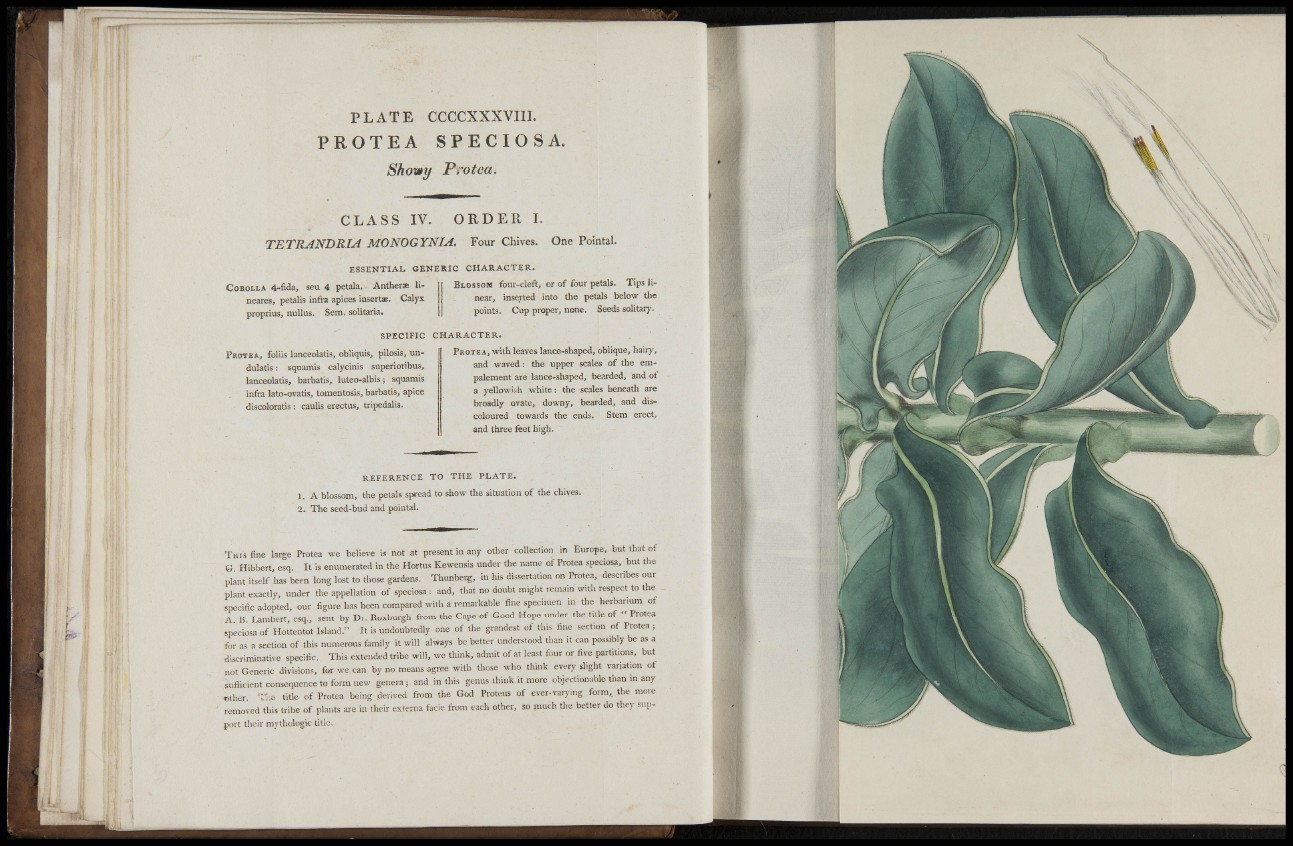
I.•'5 | ï
PLATE CCCCXXXVIII.
PROTEA SPECIOSA.
Showy Protea,
CLASS IV. ORDER L
TETRANDRIA MONOGYNIA. Four Chives. One Pointal.
ESSENTIAL GENERIC CHARACTER.
COROLLA 4-fidaj seu 4 pétala. Anther» lineares,
petalis infra apices inserts. Calyx
proprius, nullus. Sem. solitaria.
BLOSSOM four-cleft, or of four petals. Tips linear,
inserted into tlie petals below tlie
points. Cup proper, none. Seeds solitary.
SPECIFIC CHARACTER.
PROTEA, foliis lanceolatis, obliquis, pilosis, unduktis
: squamis calycinis superioribus,
lanceolatis, barbatis, luteo-albis; squamis
infra lato-ovatis, tonientosis, barbatis, apice
discoloratis : caulis erectus, tripedalis.
PROTEA, with leaves lance-shaped, oblique, hairy,
and waved : the upper scales of the empalement
are lance-shaped, bearded, and of
a yellowif.h white: the scales beneath are
broadly ovate, downy, bearded, and discoloured
towards the ends. Stem erect,
and three feet high.
REFERENCE TO THE PLATE.
1. A blossom, the petals spread to show the situation of the chives.
2. The seed-bud and pointal.
T H I S fine large Protea we believe is not at present in any other collection in Europe, but that of
G Hibbert, esq. It is enumerated in the Hortus Kewensis under the name of Protea speciosa, but the
plant itself has been long lost to those gardens. Thunberg, in his dissertation on Protea, describes our
plant exactly, under the appellation of speciosa : and, that no doubt might re.nam with respect to the
specific adopted, our figure has been compared with a remarkable fine specimen in the herbarium of
A B Lambert, esq., sent by Dr. Roxburgh from tlie Cape of Good Hope under tl.e tide of " Protea
speciosa of Hottentot Island." It is undoubtedly one of the grandest of tliis fine section of Protea ;
for as a section of this numerous family it will always be better understood than it can possibly be as a
discriminative specific. This extended tribe will, we think, admit of at least four or five partitions, but
not Generic divisions, for we can by no means agree with those who think every slight variation ot
sufficient consequence to form new genera; and in this genus think it more objectionable than in any
other. 'I:.;, title of Protea being derived from the God Proteus of ever-varying form,, the more
removed this tribe of plants are in their externa facie from each other, so much the better do they support
their mythologic title.